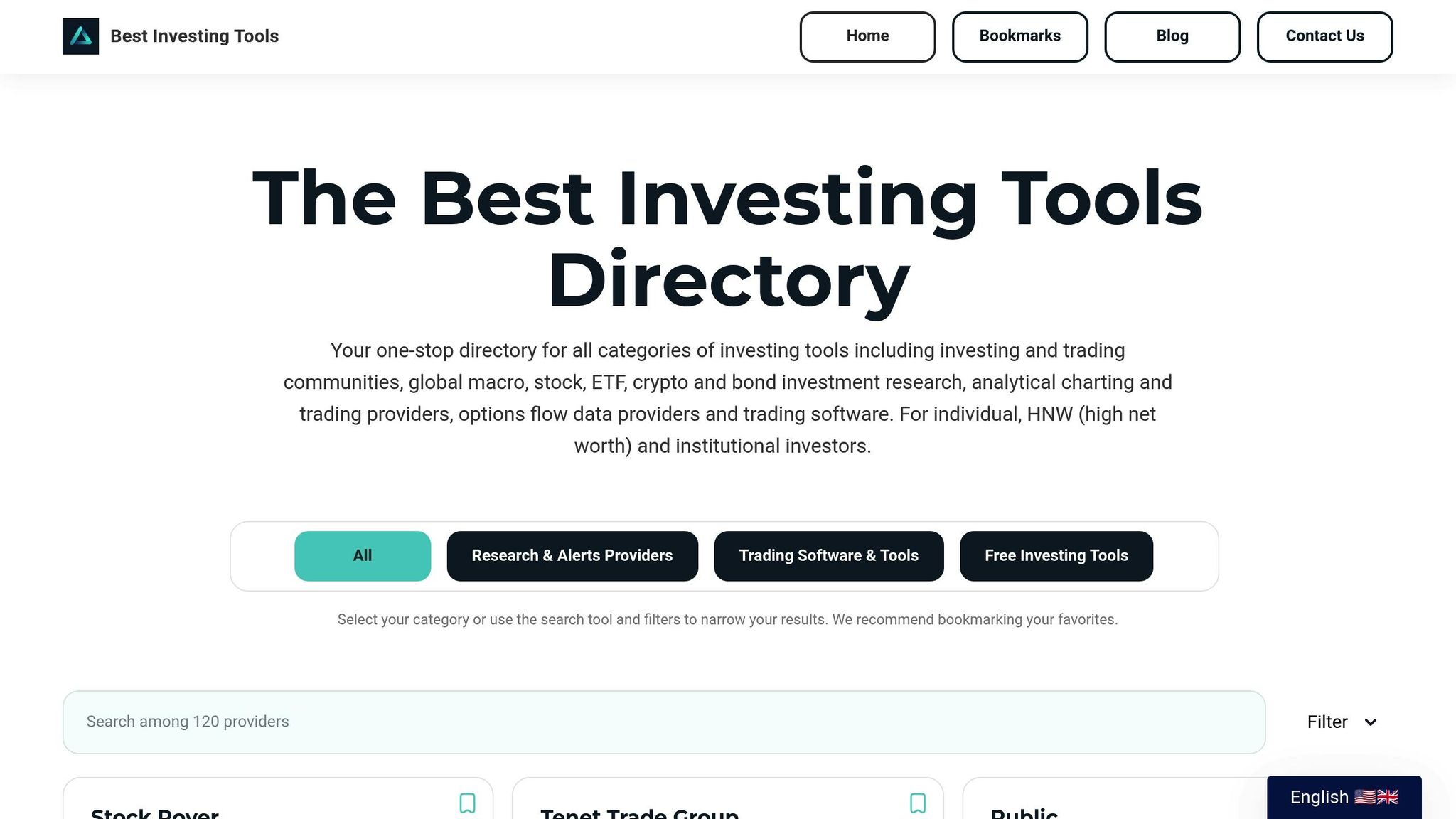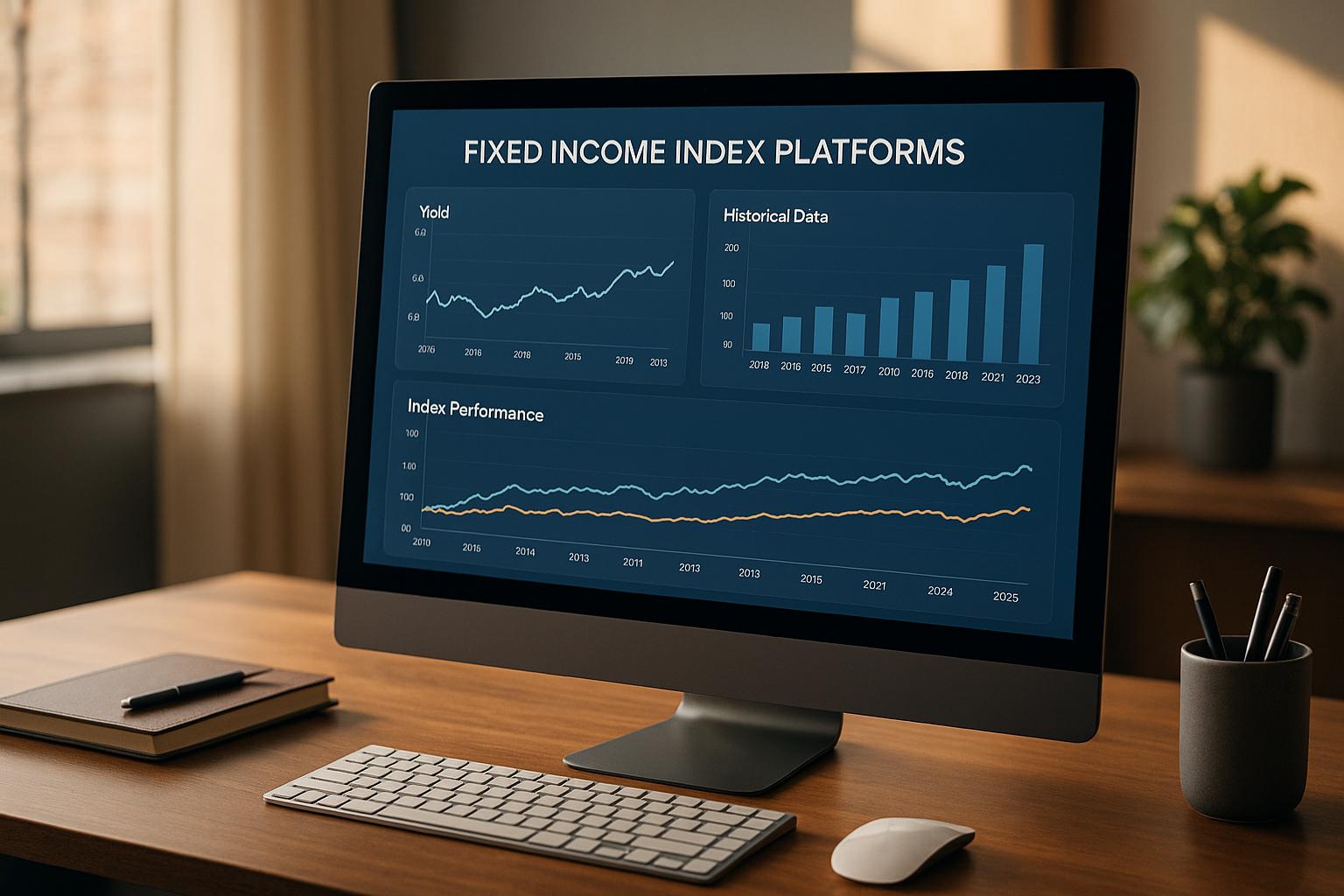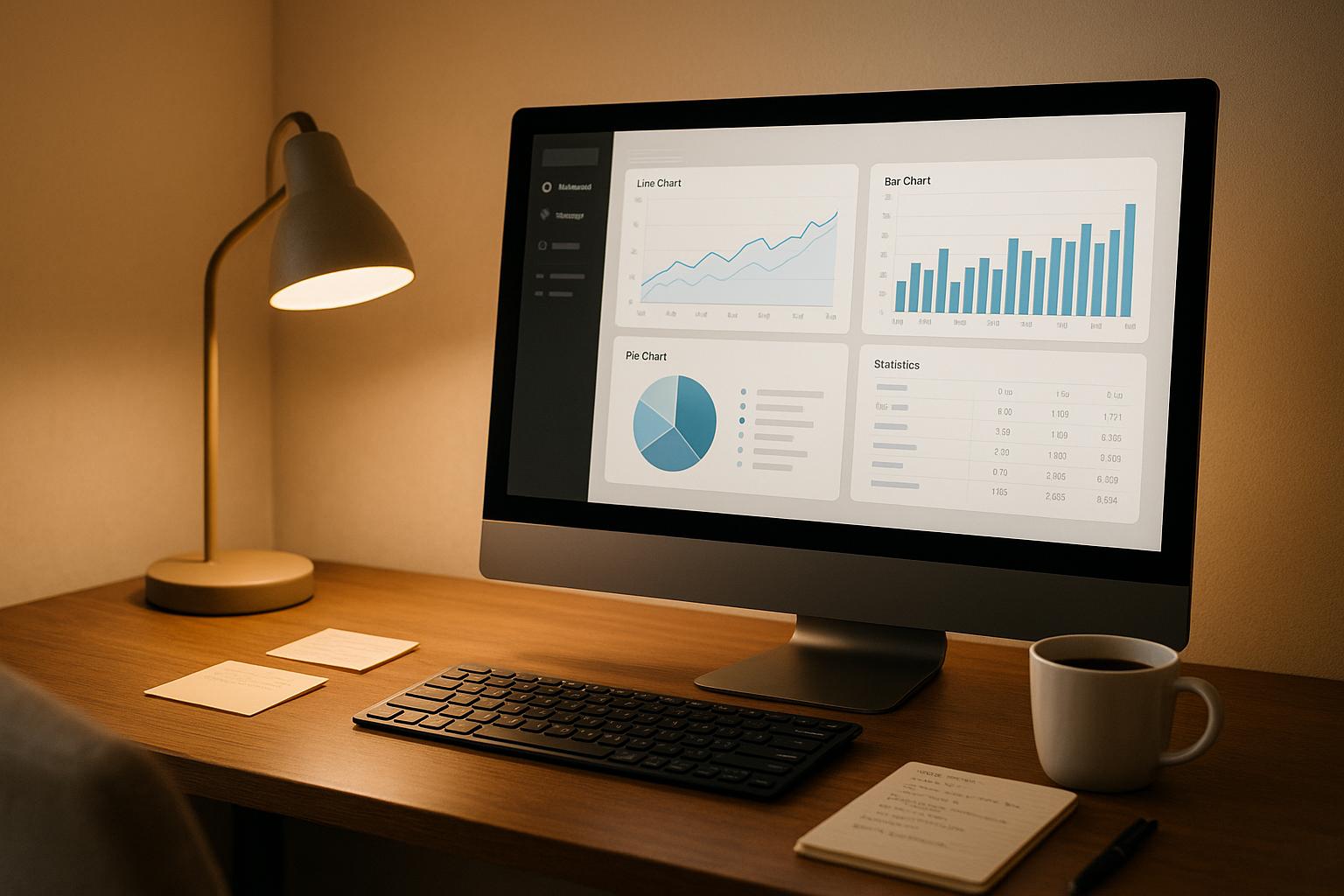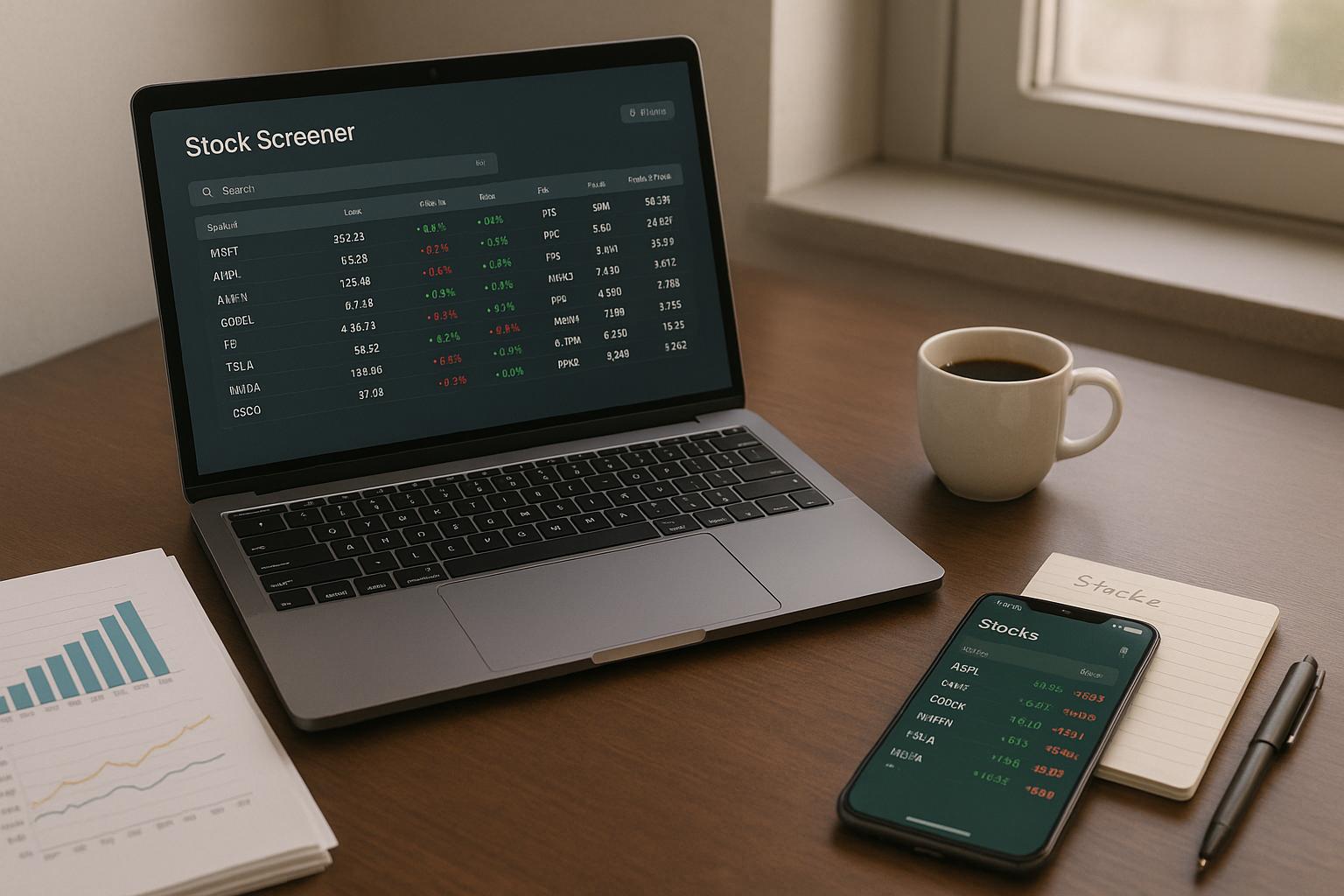FactSet and Bloomberg are two leading platforms for portfolio integration, each serving different needs for U.S. investors. FactSet prioritizes customization and workflow automation, offering strong Excel integration and tools tailored to U.S. regulatory standards. Bloomberg, on the other hand, focuses on real-time data delivery and dynamic dashboards, making it ideal for traders who need instant market insights.
Key Takeaways:
- FactSet: Best for portfolio managers needing flexible reporting and compliance tools. Features include robust APIs, Excel add-ins, and alignment with U.S. regulations like N-PORT and 18f-4.
- Bloomberg: Best for traders requiring immediate data. Offers real-time feeds like B-PIPE, customizable dashboards, and compatibility with tools like Power BI and Tableau.
Quick Comparison:
| Feature | FactSet | Bloomberg |
|---|---|---|
| Real-Time Data Speed | Standard | Exceptional |
| Dashboard Options | Intuitive and easy to adjust | Advanced but more complex |
| Excel Integration | Seamless native add-ins | Available but less intuitive |
| API Capabilities | Strong automation for workflows | Extensive, with a steeper learning curve |
| U.S. Compliance | Direct support for key U.S. regulations | Broad compliance tools |
The choice depends on your needs: FactSet simplifies workflows, while Bloomberg excels in delivering fast, actionable data.
Bloomberg, S&P CapIQ, FactSet, Thomson Reuters: Buy or Build?
FactSet Portfolio Integration Features
FactSet takes a flexible approach to portfolio integration, acting as a central hub for regulatory reporting data. By bringing together diverse datasets, it simplifies exposure aggregation and helps firms stay compliant. The platform automates data delivery and integrates seamlessly with existing systems, making reporting during critical periods much easier. Here’s a closer look at how FactSet manages data and aligns with U.S. market standards.
Data Management and Workflow Automation
FactSet offers a comprehensive data management system that consolidates information from various sources. This setup streamlines compliance and reporting workflows, specifically catering to the needs of U.S. investment firms. Its automated delivery system ensures smooth integration across an organization’s infrastructure, reducing manual effort and improving efficiency.
U.S. Market Standards Support
Designed to align with U.S. regulatory requirements, FactSet provides tools to address new financial regulations, including key standards like derivatives risk management (18f-4) and N-PORT. The platform doesn’t just automate processes - it also strictly adheres to U.S. market expectations. For example, FactSet supports options trading with the Options Price Reporting Authority (OPRA) Real-Time Feed, meeting essential U.S. market criteria.
FactSet also taps into data from major U.S. regulatory bodies, such as the SEC, FFIEC, FDIC, and HMDA, to deliver in-depth analysis of public and private banks in the U.S.. For insurance-focused portfolios, it provides U.S. Statutory Data sourced directly from statutory filings. This data is developed in collaboration with A.M. Best Company, Inc., a credit rating agency approved by both the SEC and NAIC.
Bloomberg Portfolio Integration Features
Bloomberg stands out with its focus on real-time data delivery and customizable visual tools, catering specifically to institutional investors who require instant market insights and adaptable reporting options. While FactSet leans on API and Excel integrations for workflow automation and regulatory data management, Bloomberg prioritizes immediate data feeds and dynamic dashboards to support quick decision-making. This approach aligns well with the fast-paced demands of U.S. investors.
Real-Time Data Integration
At the heart of Bloomberg's offerings is the B-PIPE real-time market data feed, which delivers standardized, up-to-the-minute data across all operational levels, from the front office to back-end operations. This feed not only captures live pricing but also the market events influencing those prices. By processing these events instantly, firms can analyze portfolio impacts in real time, ensuring compliance with best-execution standards and maintaining accurate, timely portfolio updates in rapidly shifting markets.
Dashboard Customization Options
Bloomberg takes its real-time data capabilities further with advanced customization tools for portfolio tracking and analysis. Its dashboards are fully customizable, allowing users to create personalized layouts and filter investment universes for streamlined multi-portfolio analysis. The Portfolio Analytics dashboard on the Bloomberg Terminal provides multi-portfolio visualization and includes templates for generating client-ready reports. These tools make it easy to set up parallel views for key security insights and share findings through PDFs or interactive dashboards.
For more advanced analysis, Bloomberg integrates with Power BI and offers BQL for PORT Enterprise. The Bloomberg Power BI Template Library provides pre-designed templates that users can download, customize, and populate with PORT data for in-depth analysis. Meanwhile, BQL for PORT Enterprise delivers portfolio reporting datasets hosted in Bloomberg's cloud, enabling further analysis in tools like Excel, BQuant, Power BI, and Tableau. The PORT Workspace enhances this ecosystem by offering a reusable environment for performance analysis and risk forecasting. Additionally, Bloomberg Launchpad provides a tailored workspace with dynamic tools for monitoring multi-asset class securities, setting alerts, charting market movements, and accessing news updates.
U.S. System Compatibility
Bloomberg also addresses the complexities of the U.S. regulatory landscape by offering a comprehensive suite of compliance solutions. These resources cover everything from news and analysis to execution, clearing, and reporting, ensuring firms remain compliant throughout their workflows.
With a team of regulatory experts maintaining close connections with both regulators and clients, Bloomberg ensures its products stay aligned with evolving rules and standards. The platform's unified data streams capture activity across U.S. trading venues, supporting best-execution practices and helping firms navigate the intricacies of U.S. regulations seamlessly.
sbb-itb-2e26d5a
FactSet vs Bloomberg Feature Comparison
When choosing between FactSet and Bloomberg, it often comes down to a trade-off between real-time data speed and customization flexibility. Bloomberg stands out for its fast and comprehensive data streams, while FactSet excels in user-friendly customization and seamless integration with tools like Excel. These distinctions shape how U.S. investors manage and optimize their portfolios.
Feature Comparison Table
| Feature | FactSet | Bloomberg |
|---|---|---|
| Real-Time Data Speed | Standard | Exceptional |
| Fixed Income Data | Comprehensive coverage | Industry-leading with the fastest updates |
| Dashboard Customization | Customizable interface | Customizable but more complex |
| Excel Integration | Native Excel add-ins, seamless workflow | Available but less intuitive |
| API Capabilities | Robust API with workflow automation | Extensive API, steeper learning curve |
| User Interface | User-friendly and intuitive | Professional but more complex |
| Best Suited For | Portfolio managers needing flexible reporting | Traders requiring instant market insights |
This table underscores how each platform caters to distinct priorities, depending on user needs.
Platform Strengths and Weaknesses
Let’s break it down further:
Bloomberg shines with its unmatched real-time data capabilities. Its fixed income data is considered the most comprehensive and is updated faster than any competitor, making it the go-to for traders requiring immediate market insights.
On the other hand, FactSet's edge lies in its ability to offer superior customization and integration with everyday tools like Excel and PowerPoint. This makes it particularly appealing for portfolio managers who need to create tailored client reports, conduct in-depth analysis, and share findings across platforms. The platform’s intuitive interface allows users to easily adjust dashboards and reporting formats without needing advanced technical skills.
Additionally, FactSet's strong API capabilities enable firms to automate workflows, streamlining portfolio management processes. This feature is especially useful for U.S. investment teams looking to enhance efficiency in data handling and reporting.
However, FactSet does have a limitation. In high-pressure market scenarios where immediate responses are crucial, FactSet’s real-time data, while reliable, doesn’t quite match the speed and breadth offered by Bloomberg. For traders making split-second decisions, this can be a critical factor.
Ultimately, the choice between the two platforms depends on the user's specific needs. Portfolio managers who prioritize customization and reporting often lean toward FactSet, while traders who require instant, real-time insights typically prefer Bloomberg.
Platform Selection Guide for U.S. Investors
Decision Factors to Consider
When deciding between FactSet and Bloomberg, U.S. investors should consider several operational factors that align with their portfolio integration needs.
Regulatory compliance is a major priority. FactSet directly supports key U.S. regulations like N-PORT and derivatives risk management (18f-4), helping investors streamline compliance by consolidating data sources. This approach can lower costs and simplify operations. Bloomberg, on the other hand, takes a broader stance, emphasizing its ability to assist firms in meeting a wide range of regulatory and compliance requirements.
IT infrastructure compatibility is another critical factor. FactSet provides flexible data delivery through automated feeds that integrate seamlessly with both existing and legacy systems. It also offers direct integration with its execution management system, enhancing efficiency. Bloomberg focuses on connectivity with popular business intelligence tools like Excel, Microsoft Power BI, and Tableau, enabling robust visual reporting capabilities.
Trading workflow requirements should also guide your decision. FactSet is ideal for those needing pre- and post-trade compliance, allowing compliance reviews before executing trades. Meanwhile, Bloomberg emphasizes intraday and end-of-day risk monitoring, offering advanced market and portfolio risk analysis tools that automate and streamline workflows.
Cost considerations go beyond subscription fees. FactSet’s consolidated regulatory reporting can help lower operational expenses, while Bloomberg’s real-time data capabilities cater to firms requiring immediate market insights. Balancing the cost structure of each platform with your operational needs will ensure a well-informed choice.
These factors not only influence your platform decision but also help identify complementary tools that enhance your investment strategy.
Best Investing Tools Directory Resources

To refine your platform choice, the Best Investing Tools Directory is an excellent resource for U.S. investors. This directory provides detailed reviews of investment research tools, online trading software, and technical analysis platforms, helping you find tools that integrate seamlessly with your chosen system.
The directory’s filtering options make it easy to narrow down tools based on specific needs. For example, if you choose FactSet for its Excel integration, you can use the directory to find compatible charting tools or options data providers that enhance your analysis.
Individual investors can benefit from user reviews and comparisons, offering practical insights into how platforms perform under various market conditions. Institutional investors, on the other hand, can use the directory to evaluate supplementary tools that align with their primary platform. This dual focus makes the directory particularly valuable for investment advisors and wealth management firms catering to diverse client needs.
Conclusion
FactSet and Bloomberg offer distinct approaches to portfolio integration for U.S. investors. FactSet focuses on simplifying data consolidation and automating workflows, which can help lower operational expenses and ensure compatibility with existing IT systems. On the other hand, Bloomberg prioritizes real-time data delivery and customizable dashboards, making it an attractive option for organizations that need immediate market insights and rely on visual reporting tools like Excel, Microsoft Power BI, and Tableau.
The choice between these platforms comes down to your operational needs and current technology infrastructure. If your priority is to optimize workflows and reduce complexity, FactSet might be the better fit. However, if instant access to market data and dynamic reporting tools are critical for your operations, Bloomberg’s ecosystem could be more suitable. These differences reflect the specific regulatory and operational considerations of U.S. investors.
It’s also important to account for the costs of integration, training, and ongoing maintenance when evaluating these platforms. A long-term perspective is essential - don’t let short-term feature preferences overshadow the broader impact on your portfolio management strategy.
For a deeper dive into investment tools that work well with either platform, check out the Best Investing Tools Directory. Ultimately, your decision should align with the strategic goals discussed here, ensuring your technology stack supports your portfolio management objectives effectively.
FAQs
How do FactSet and Bloomberg differ in their approaches to U.S. regulatory compliance?
FactSet takes a personalized, client-centered approach to U.S. regulatory compliance. By combining industry know-how with powerful portfolio analytics and reporting tools, they aim to address specific regulatory needs. Their solutions are crafted to align with each client's unique requirements, ensuring a tailored experience.
Bloomberg, in contrast, focuses on technology-driven, all-in-one solutions for regulatory management. Their tools are designed to simplify compliance processes with features like surveillance, record-keeping, and automated reporting. This approach provides a seamless framework for managing regulatory risks effectively.
In essence, FactSet emphasizes flexibility and customization, while Bloomberg relies on cutting-edge technology and integrated data to handle compliance challenges.
What should U.S. investors consider when deciding between FactSet and Bloomberg for portfolio integration?
When deciding between FactSet and Bloomberg for portfolio integration, U.S. investors should weigh factors like usability, pricing, and their unique portfolio management requirements.
FactSet stands out for its user-friendly interface and comparatively lower cost, making it an appealing option for those focused on equity analysis and straightforward portfolio management tasks. Meanwhile, Bloomberg offers a more extensive range of data and analytics tools. This makes it a better fit for investors who demand detailed financial analysis and comprehensive reporting, though it comes with a steeper price.
The choice ultimately boils down to what matters most to you: a more affordable and simple solution or access to extensive data and advanced analytical tools.
How do Bloomberg's real-time data features compare to FactSet's portfolio customization options?
Bloomberg is celebrated for its ability to deliver real-time data. It provides instant access to live market updates, portfolio tracking, and advanced analytics. These tools are a perfect match for portfolio managers who thrive on quick, data-informed decisions in fast-paced market environments.
FactSet, by contrast, shines with its high level of customization. It allows portfolio managers to design tailored risk analyses, generate personalized reports, and adjust data views to fit specific needs. This makes it an excellent choice for those who value customized insights and detailed portfolio management over immediate trading data.
In essence, the two platforms address different needs: Bloomberg is all about speed and real-time updates, while FactSet focuses on flexibility and personalized portfolio management.



